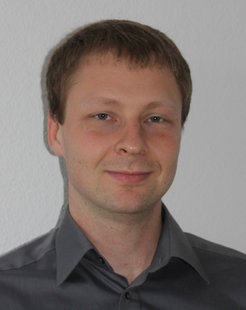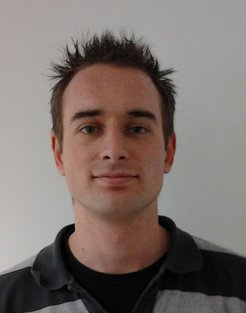Squeezed light and stopwatches for gravitational waves: AEI scientists receive awards for their doctoral theses
A member of the Albert Einstein Institute (AEI) Hannover is to be the first recipient of a prize awarded for the best doctoral thesis in the field of gravitational physics. Alexander Khalaidovski will be presented with the newly established Stefano Braccini Prize for his PhD work on improving the sensitivity of gravitational wave detectors. The doctoral research of another AEI scientist, Rutger van Haasteren, will also receive an honourable mention when the prize is presented tomorrow at a ceremony during a meeting of gravitational wave scientists in Cascina, Italy.
The prize was endowed in honour of the Italian gravitational physicist Stefano Braccini and is worth €500. It is being presented to Dr Khalaidovski for his thesis, “Beyond the quantum limit – a squeezed-light laser in GEO600”, which describes his development of a device that exploits quantum principles to increase the sensitivity of the GEO600 detection system. Dr van Haasteren’s thesis, “Gravitational wave detection and data analysis for pulsar timing arrays”, shows how observations of rapidly rotating neutron stars could be used to measure gravitational waves.
Beyond the quantum limit – a squeezed-light laser in GEO600

“The gravitational wave detector GEO600 is one of the most sensitive scientific instruments in the world”, explains Dr Khalaidovski. “At some frequencies, the sensitivity is so high that it is limited only by quantum effects. My job was to build a device that would reduce the uncertainty in the measurements, which is introduced by quantum mechanics. We can now measure to levels of sensitivity that are normally inaccessible because of quantum ‘noise’. We do this by using what is called ‘squeezed’ light, whereby most of the quantum uncertainty is pushed into one particular mode of the laser light that is used in not making the measurements.”
Using pulsars as stopwatches for gravitational-wave measurements

Dr van Haasteren, who carried out his doctoral research at the Observatory of the University of Leiden in the Netherlands, investigated how pulsars – rapidly spinning neutron stars – could be used to measure gravitational waves. “Some pulsars can be used as ultra-precise stopwatches”, he explains. “The signals from the pulsars can be recorded at radio telescopes like the German Effelsberg radio telescope. The pattern of the recorded signals in such a pulsar timing observation will change when a gravitational wave crosses space”. Gravitational waves stretch and squeeze space. Since the speed of the signals remains constant (light speed), but the distance they traverse changes, the signals from the distant pulsars will take slightly different times to arrive at Earth.
Both researchers will present their work at the scientific conference at the French-Italian Virgo gravitational wave observatory in Cascina.
Alexander Khalaidovski (born 1982) studied physics at the Leibniz Universität Hannover and carried out his postgraduate work at the AEI under Professor Roman Schnabel. He regularly spends time doing research at the LIGO Hanford gravitational wave observatory in the US, and has been working as a research associate at the AEI Hannover since he obtained his PhD in 2011.
Rutger van Haasteren (born 1983) studied physics at the University of Leiden in the Netherlands. In 2011, he obtained his PhD there with Professor Yuri Levin. He has since been working as a research associate at the AEI in Professor Bruce Allen’s research group.













